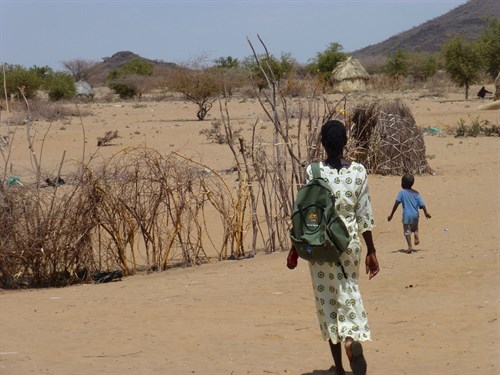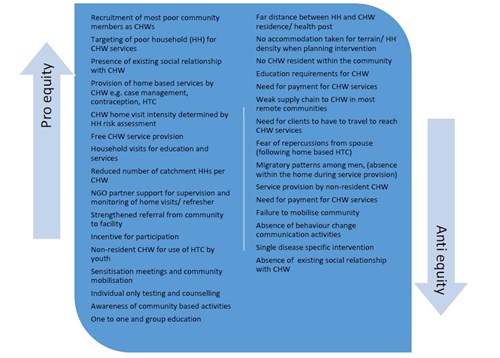
By Rosalind McCollum,
There are dramatic differences in mortality and life expectancy between and within countries. Disadvantaged groups have poorer survival chances and use facility-based services less than other groups. Community health services are an opportunity to improve this situation and create a pathway to Universal Health Coverage (UHC).
Community Health Workers (CHWs) can improve equitable child survival, health, and nutrition by bringing services closer to the homes of hard-to-reach and underserved people. However, new health interventions typically reach richer groups first, only benefiting the poor later. So we shouldn’t assume that introducing CHWs within a health system will automatically result in equitable coverage of health services. We carried out a systematic review which describes how equity plays out within CHW programmes and identifies ways in which we can design CHW programmes that influence equity.
What were we trying to find out?
In this study we wanted to understand:
- What evidence there is of (in)equity in CHW programmes?
- What influences how equitable CHW programmes are in terms of access, utilisation, quality and community empowerment?
What did we find?
There were few studies which assessed levels of equity in CHW programmes (34 papers included, from 32 studies). There was a difference in the package of services provided between continents. CHW programmes in the Americas had a comprehensive bundle of services which provided care for all the family, in Asia CHW programmes were often focused on a single group within the population, such as mothers and newborns. While in Africa CHW programmes studied had a disease specific focus, for example home based diagnosis and treatment of malaria. Given the limited package of services observed in studies conducted in Africa this raises equity concerns around access to comprehensive community health services.
CHW programmes were found to promote equity in terms of access and utilisation of community health services by reducing inequities relating to place of residence, gender, education and socio-economic position. CHWs can also contribute towards more equitable uptake of referrals at health facility level. There was no clear evidence for equitable quality of services provided by CHWs, with no studies having assessed technical quality, although client satisfaction with services (as a proxy for quality) indicated lower quality for poorer clients in some studies. There was limited information regarding the role of the CHWs in generating community empowerment to respond to social determinants of health.
How to improve CHW programme design
Recruitment of the poorest community members as CHWs, close proximity of services to households, pre-existing family relationship or social ties with CHW, home-based services, free service delivery, targeting of poor households, strengthened referral to facilities, sensitisation and mobilisation of community members were all things that promoted greater equity within CHW services. There were also programme design features that appeared to hinder equity in programmes. These include low numbers of CHWs and a lack of consideration for the terrain or population density that they have to cover, long distances between CHWs’ homes and health posts, costs of services, lack of information about services and failure to mobilise community. Policy makers should take these factors into account when planning programmes.

What can we learn from this study?
CHWs are able to address both supply side barriers (aspects of the health system that may hinder use of services) and demand side barriers (things that influence ability to use health services at individual, household or community level) to uptake of health services to promote more equitable access and use of health services. However, care must be taken by policymakers and programme designers and managers to take into account factors which can influence the equity of services during planning and implementation of CHW programmes.
Photo credit: CHW Diana carrying out a household visit in her community in rural Turkana County, Kenya. Taken by Rosalind McCollum.
Recent news
- How relationships shape community health workers’ performance in Ethiopia, Kenya, Malawi and Mozambique, 13 May 2016
- Co-constructing knowledge about health with the young people of Korogocho informal settlement, 28 April 2016
- Embedding Group supervision to ensure quality maternal health services in Shebedino District, Ethiopia, 15 April 2016

This project is funded by the European Union.
